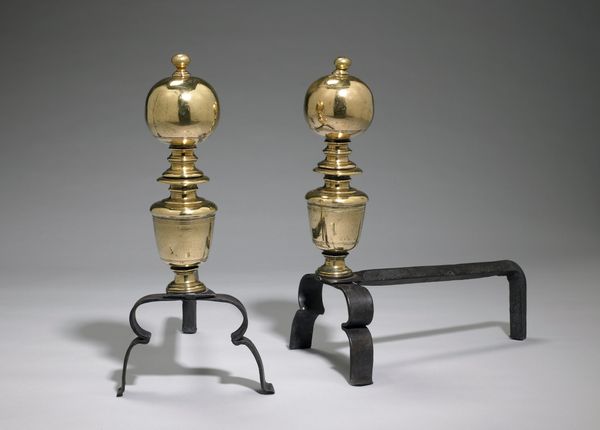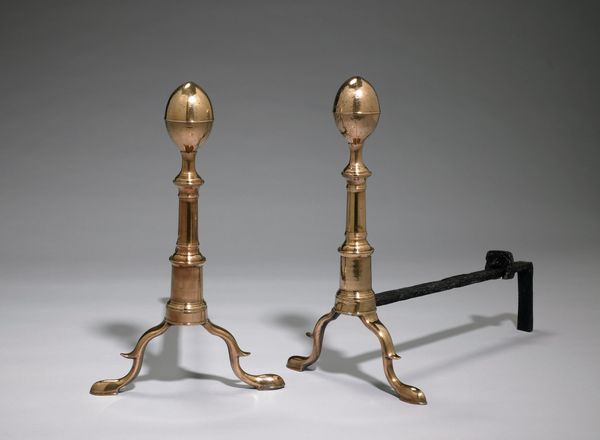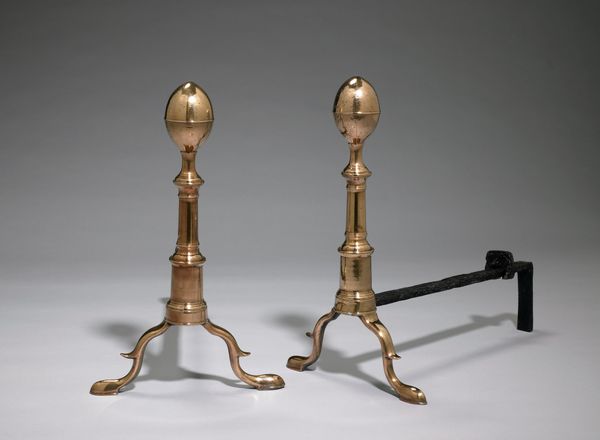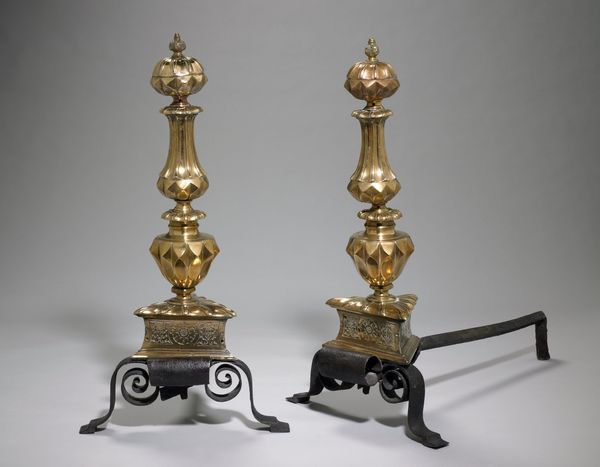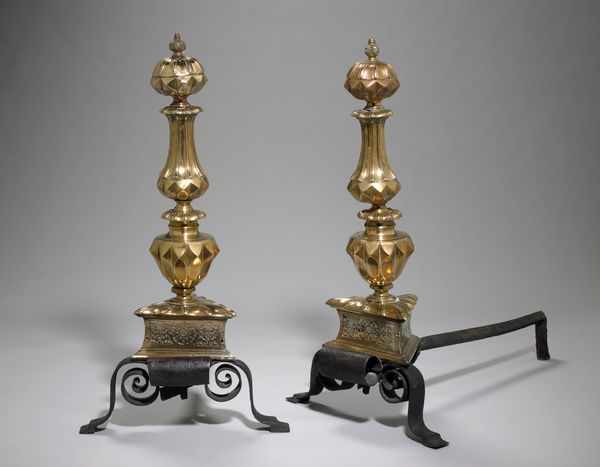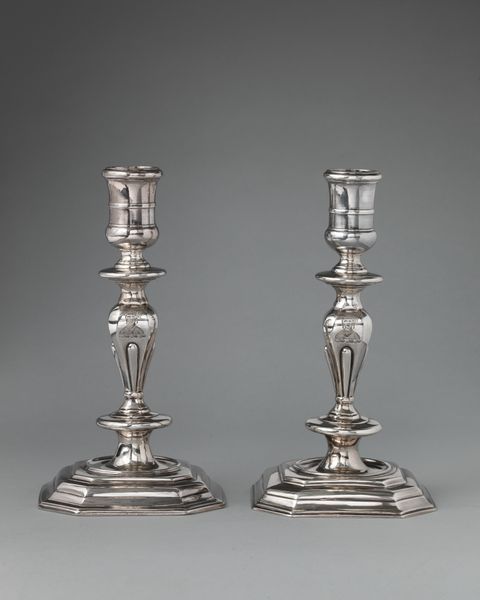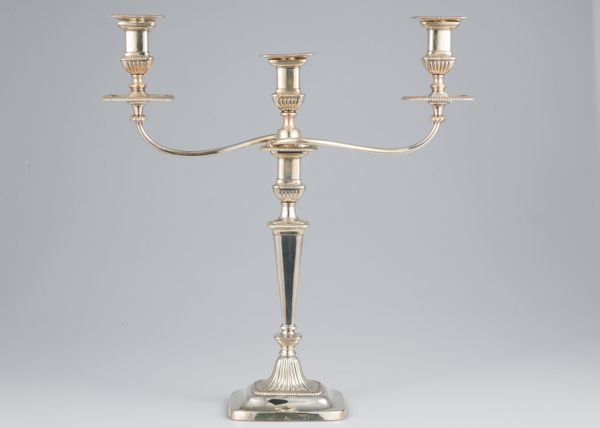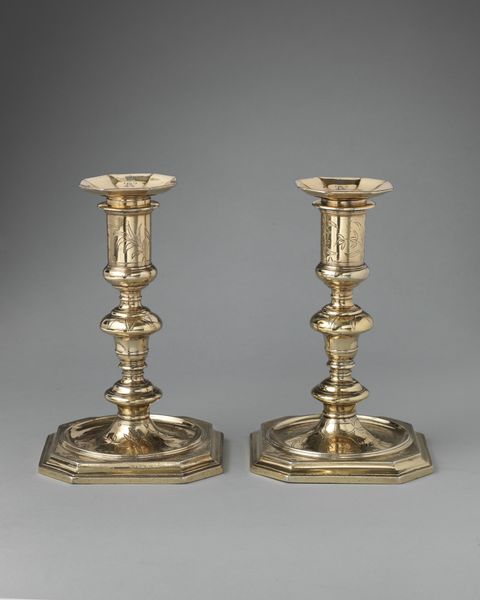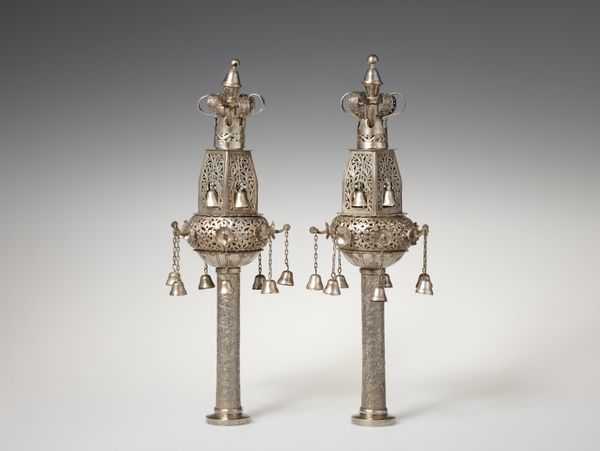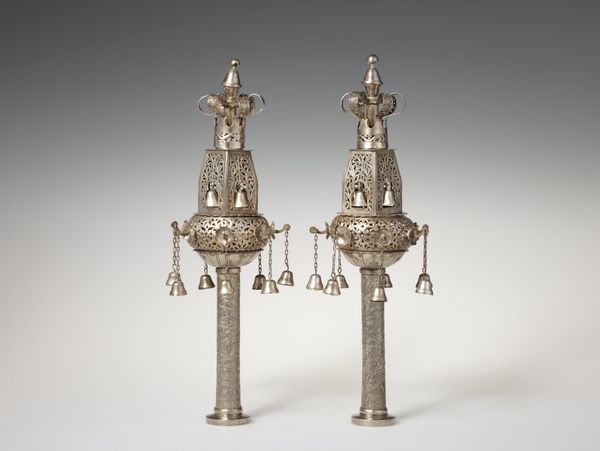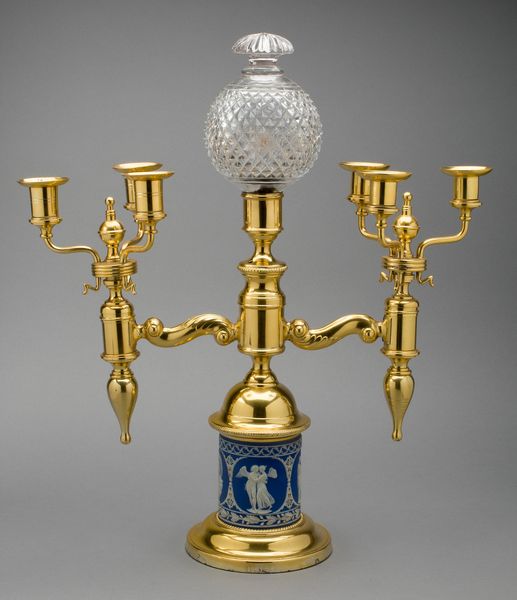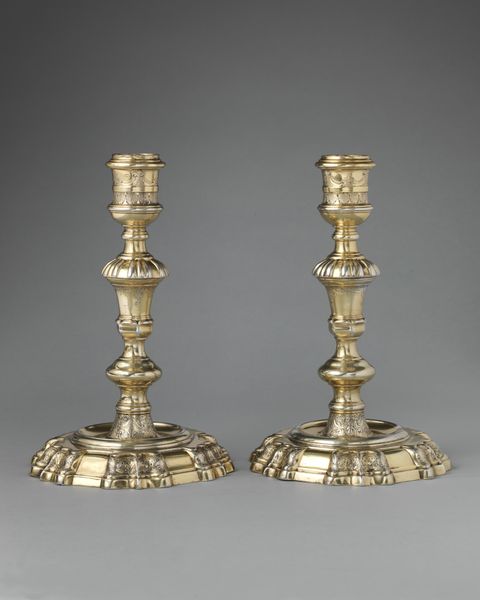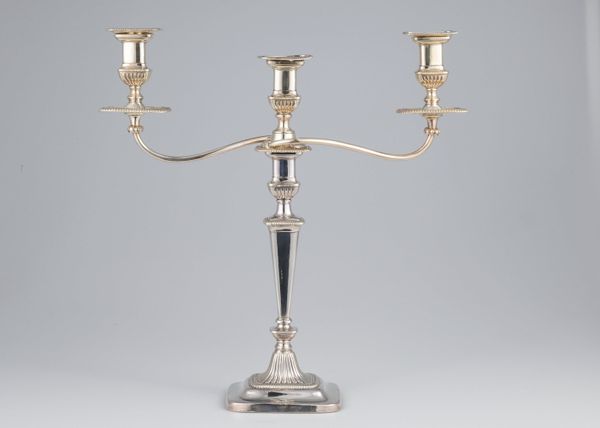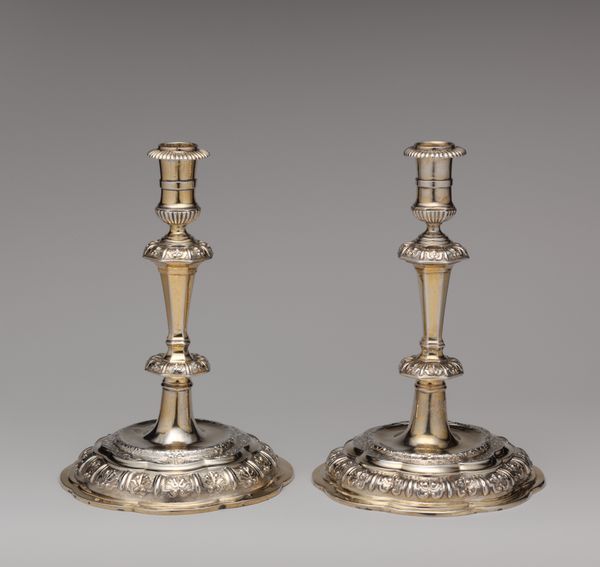
brass, metal, sculpture
#
brass
#
baroque
#
metal
#
sculpture
#
decorative-art
Dimensions: 19 3/4 x 21 3/4in., 35.3lb. (50.2 x 55.2cm, 16kg)
Copyright: Public Domain
Curator: I'm struck immediately by the sheer formality of these objects. There's a rigidity, almost a stateliness, in the contrast between the lustrous brass and the stark wrought iron. Editor: Indeed. What we’re observing here are andirons, dating back to the 17th century. Though crafted by an anonymous artist, this decorative-art sculpture serves a distinct function. Andirons, sometimes called firedogs, were placed in hearths to support burning wood. Curator: Ah, a functional object elevated by ornamental excess! Notice how the bulbous brass finials rest atop fluted sections and sturdy tripods. The structure is essentially a study in stacked geometric forms: sphere, cylinder, and so on. Editor: These andirons, like many decorative objects from that period, tell us a great deal about social class and aspiration. To have the resources to embellish something as basic as a fire support spoke volumes. Homes transformed into sites for artistic display, didn't they? Curator: Absolutely. And the surface play is significant, consider how light interacts with the brass, creating a soft glow in contrast with the shadow absorption of the wrought iron, enhancing their visual prominence against the flames in the hearth. Editor: In today's setting at the Minneapolis Institute of Art, their historical context might be slightly obscured. Consider them as integral elements in defining power dynamics of the 17th-century home, reflecting the period's economic disparities and social performance through art. Curator: I find myself admiring the visual rhythm. The repeated shapes establish a dialogue. In this case, each individual unit exists only by relation to another. Form follows function, then transcends it through careful placement and material contrasts. Editor: True. These andirons now spark contemplation in a gallery setting, and invite reflection on their cultural journey—from functional fixture in an elite household to admired object within a museum context. They demonstrate, if nothing else, art's enduring role in storytelling.
Comments
No comments
Be the first to comment and join the conversation on the ultimate creative platform.
